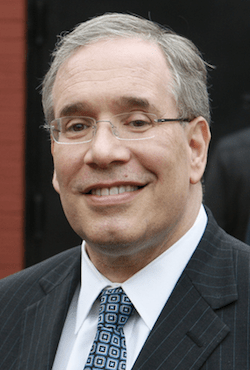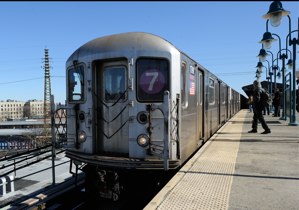The following is by City Comptroller Scott Stringer.

For years, New York City transit riders have received nothing but lumps of coal in their holiday stockings. Buses and trains running slow and behind schedule. Paltry service in the early mornings, late evenings, and weekends. Decaying infrastructure. And construction projects that are perennially over-time and over-budget.
Surely riders deserve something shiny and new this year, right? Sorry kids -- instead, the Grinches at the MTA are set to double down on coal, with fare hikes, reduced service, and a ballooning budget deficit all on deck.
Enough is enough! Here’s my holiday wish list…
- First, we need to increase subway and bus service in peak and off-peak hours – not reduce it! Coupling fare hikes with service cuts, as is planned, is a sure-fire way to repel riders and send the MTA into a death spiral. The MTA needs to recognize that the city’s fastest growing industries – healthcare, food services, arts and entertainment, accommodations – largely operate outside of the nine-to-five workday, and they need to align our transit system to that reality.
- Moreover, as Albany inches closer to congestion pricing, we need to be offering commuters in the Bronx, Queens, Brooklyn, and Staten Island real transit alternatives, not reduced service. Otherwise, they’ll have little incentive to leave their cars at home and congestion pricing will fail.
- That’s why, for this holiday season, we need a big, bold, five-borough transit plan that makes public transit the smart, most efficient option.
- This should include major upgrades to our bus system, like better integrated, enforced and designed bus lanes, more bus shelters, all-door boarding, and Transit Signal Priority at traffic lights.
- Next, we need to “open up” the 38 Metro-North and LIRR stations in the Bronx, Queens, and Brooklyn, which are currently locked behind a steep paywall and, more often than not, bypassed by commuter rail trains. These rail lines are hiding in plain sight, and the MTA needs to cut fares for in-city trips and increase service at each of these stations.
- At the same time, we need to make our subway and commuter rail stations more accessible to the elderly, young families, and the disabled. There are currently 62 neighborhoods in the city that have subways but not a single accessible station, which effectively locks out over 600,000 mobility-impaired residents. That must change!
- Finally, we need a stable, robust funding stream for the MTA. Congestion Pricing must be prioritized this session, but looking forward, we should also draw from the important work of the MTA Sustainability Advisory Workgroup and consider important recommendations related to cruising charges on for-hire vehicles, MTA air rights, and real estate taxes.
Here’s wishing everyone a happy holidays, a joyous New Year, and a transit system worthy of the greatest city in the world.







